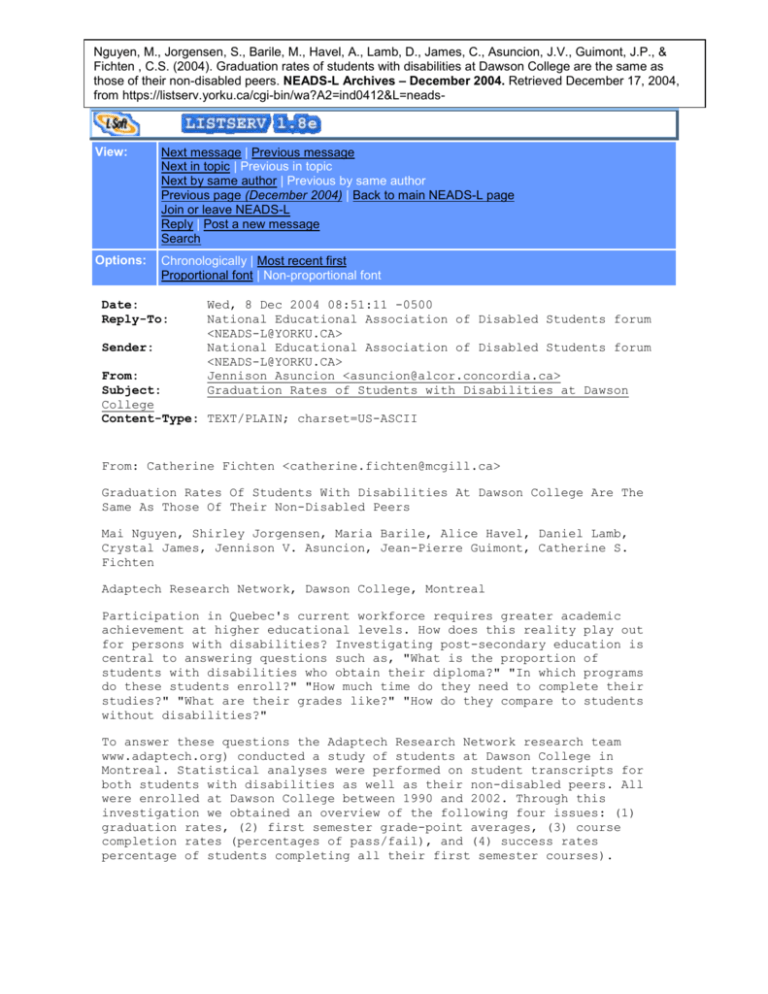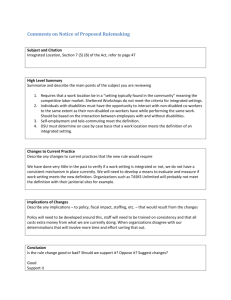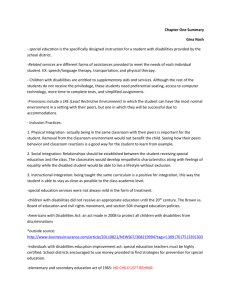View: Next message | Previous message Next in topic | Previous in
advertisement

Nguyen, M., Jorgensen, S., Barile, M., Havel, A., Lamb, D., James, C., Asuncion, J.V., Guimont, J.P., & Fichten , C.S. (2004). Graduation rates of students with disabilities at Dawson College are the same as those of their non-disabled peers. NEADS-L Archives – December 2004. Retrieved December 17, 2004, from https://listserv.yorku.ca/cgi-bin/wa?A2=ind0412&L=neadsl&T=0&F=&S=&X=26C9030542A75FC327&Y=catherine.fichten@mcgill.ca&P=563 View: Next message | Previous message Next in topic | Previous in topic Next by same author | Previous by same author Previous page (December 2004) | Back to main NEADS-L page Join or leave NEADS-L Reply | Post a new message Search Options: Chronologically | Most recent first Proportional font | Non-proportional font Date: Reply-To: Sender: Wed, 8 Dec 2004 08:51:11 -0500 National Educational Association of Disabled Students forum <NEADS-L@YORKU.CA> National Educational Association of Disabled Students forum <NEADS-L@YORKU.CA> Jennison Asuncion <asuncion@alcor.concordia.ca> Graduation Rates of Students with Disabilities at Dawson From: Subject: College Content-Type: TEXT/PLAIN; charset=US-ASCII From: Catherine Fichten <catherine.fichten@mcgill.ca> Graduation Rates Of Students With Disabilities At Dawson College Are The Same As Those Of Their Non-Disabled Peers Mai Nguyen, Shirley Jorgensen, Maria Barile, Alice Havel, Daniel Lamb, Crystal James, Jennison V. Asuncion, Jean-Pierre Guimont, Catherine S. Fichten Adaptech Research Network, Dawson College, Montreal Participation in Quebec's current workforce requires greater academic achievement at higher educational levels. How does this reality play out for persons with disabilities? Investigating post-secondary education is central to answering questions such as, "What is the proportion of students with disabilities who obtain their diploma?" "In which programs do these students enroll?" "How much time do they need to complete their studies?" "What are their grades like?" "How do they compare to students without disabilities?" To answer these questions the Adaptech Research Network research team www.adaptech.org) conducted a study of students at Dawson College in Montreal. Statistical analyses were performed on student transcripts for both students with disabilities as well as their non-disabled peers. All were enrolled at Dawson College between 1990 and 2002. Through this investigation we obtained an overview of the following four issues: (1) graduation rates, (2) first semester grade-point averages, (3) course completion rates (percentages of pass/fail), and (4) success rates percentage of students completing all their first semester courses). The transcripts of 653 students who were registered to receive services from the Services for Students with Disabilities office at Dawson College were compared to the transcripts of 41,357 students who did not request such services (their non-disabled peers). Of the sample of students registered to receive disability related services from the college, 52.6% of the students had learning disabilities (e.g., dyslexia) and/or Attention Deficit Hyperactivity Disorder (ADD/ADHD). The remaining 47.4% had visual, auditory, speech, mobility, psychiatric or medical impairments. Results show that the two groups essentially had the same graduation rates. Within pre-university programs, 55.0% of the students with disabilities who began their studies between 1990 and 1998 received (or were eligible to receive) their diploma, as compared to 54.5% of their non-disabled peers registered during the same time period. For the technology programs, 53.2% of the students with disabilities beginning their training between 1990 and 1997 received (or were eligible to receive) their diploma. The graduation rate for their non-disabled peers in the technology programs during the same period was 51.7%. These differences were not statistically significant. There was a difference between the groups when it came to the time required to graduate: between 1990 and 1998 students with a disability required approximately one semester more to graduate than did their non-disabled peers. The situation is similar for the other factors investigated: differences were not statistically significant. For example, when it came to grade point averages, students with disabilities received an average grade of 66.3% in their first semester compared to an average of 65.9% for their non-disabled peers. With regard to first semester course completion rates (percentage passed courses), the rate for students with disabilities was 81.2% versus 80.5% for their non-disabled peers. Finally, the success rate for completion of first semester courses was 49.2% for students with disabilities versus 49.4% for their non-disabled peers. In general, the grades of students with learning disabilities and/or attention deficit disorder were lower than that of the entire group of students with disabilities. However, their overall performance was not statistically different from the performance of students without a disability. In conclusion, the results of this study show that the myths and prejudices about the educational achievements of persons with disabilities are unfounded. Indeed, we consistently failed to obtain any results demonstrating statistically significant differences in grades or graduation rates between Dawson students with and without disabilities. These results are of great interest since both the general public and persons with disabilities often mistakenly believe that students with disabilities are less successful than other students. The implications are clear. Based on the present results, educational institutions and policy makers should adjust their view of students with disabilities. Funds spent on providing services and adaptive equipment for students with disabilities in high school and postsecondary institutions is clearly a worthwhile investment. We of the Adaptech Research Network hope that these results will encourage all students to continue with their postsecondary education. We also hope that the findings will help students with disabilities remain optimistic; there are only good news for them in the findings of our study. Back to: Top of message | Previous page | Main NEADS-L page YorkU.CA Listserv Home Page






